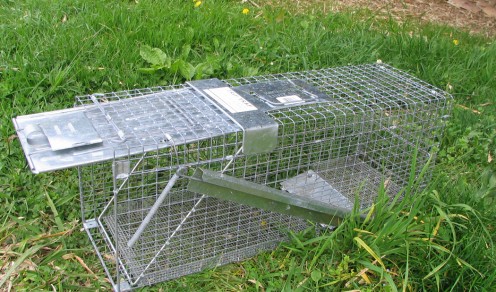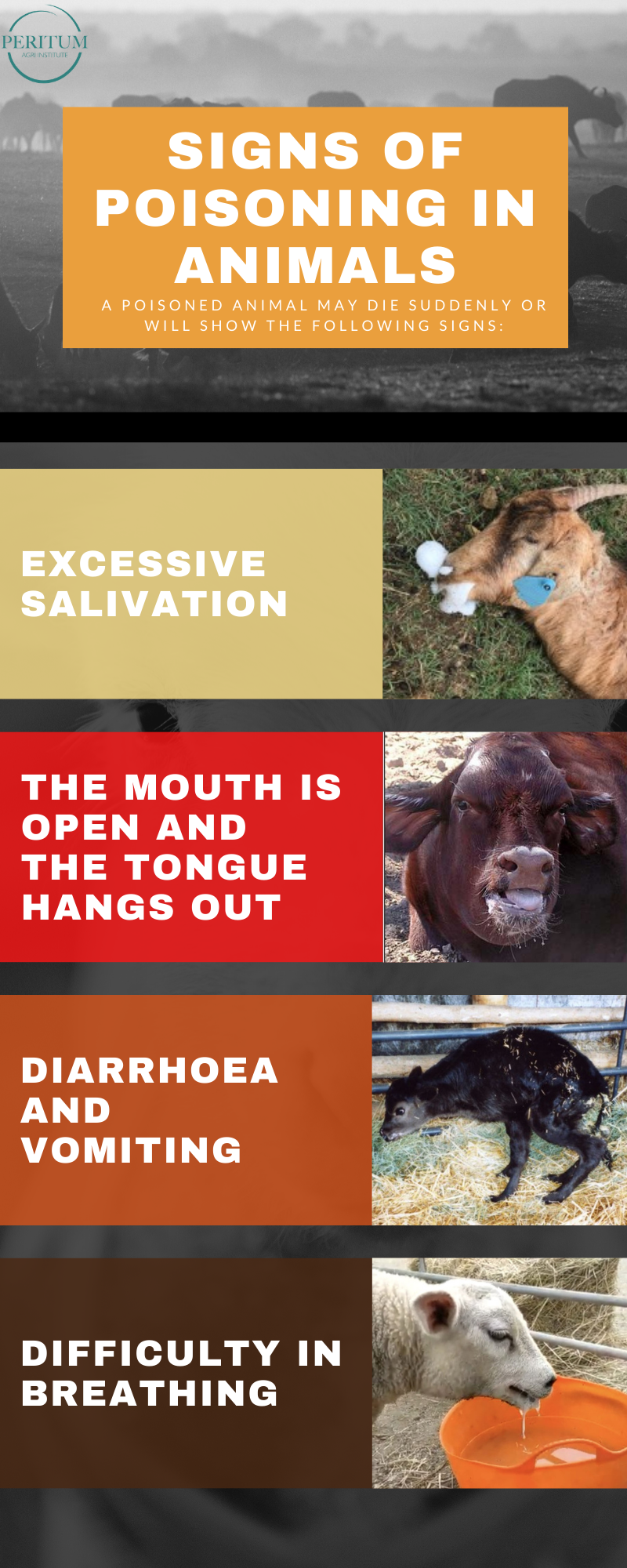Poisoning – not recommended as it often affects other animals as well
Trapping – only recommended if the traps don’t harm the animals and the animals can be released elsewhere out of the traps
Hunting – not recommended and often illegal
Trapping
A live trap is a trap that doesn't kill the animal. They are generally built by employing a cage with a trap door that lowers when the animal crawls into it. Bait is placed inside the cage and the animal’s weight trips the door and closes it. Live trapping is an effective animal control alternative that is both humane and earth-friendly. Whether you are successful in catching a live animal depends on choosing the right bait and location among factors.
It is recommended that you get all the necessary information from local vets and authorities before setting a trap to determine the lawful method of releasing a captured wild or nuisance animal. Many species are protected by law.
 |
The following tips should be used when preparing to live to catch your nuisance animal:
Testing the Trap
Following the instructions contained in the carton, you may want to test the trap and spring it a few times to make sure that it works properly. For example, spring it by touching the trip plate from each end.
This should be done also after the trap has been set and camouflaged to make sure it works freely. If you feel the doors do not work fast enough, place small stones or other weights on top of the door. This will cause doors to drop faster.
New Traps
When you receive the trap, it will be bright and new. Therefore, do not be discouraged in case you do not catch what you anticipated the first night or day. The effectiveness of traps usually improves with age. Some animals do not mind a new trap while others do.
So instead of setting the trap to catch the first animal to come along, bait the trap, or simply place it where you intend to set it and fasten the doors open by means of a stick or wire.
After a couple of days, when you notice the bait has been disturbed or taken, it is time to set the trap.
Click here to view a video that explains how to set and use a cage trap.
Camouflaging the Trap
Camouflaging the trap is an effective means to entice the animal.
Place twigs and leaves all over the trap to remove a lot of the glare from the trap. You can even spray it with water and throw dirt on it to give it a conditioned look.
Animals will not be discouraged from entering the trap by the smell of your handling the trap or from supposed machine/oil odours in the manufacturing process.
Poisoning
Poisoning animals is not recommended, and you also run the risk of the cattle of the farm ingesting the poison. Here follows some information on common poisons encountered and some recommendations for antidotes.

The use of chemical compounds will, and should, always be controversial. Most poisons kill sentient animals inhumanely and should not be considered for use on vertebrate animals. However, some poisons Kill as humanely as any other lethal method and can often be applied in ways not possible with the other methods. This is very significant in the light of the facts about the learning ability of the animals. As many acceptable control options as possible need to be used to effectively stop damage. The most effective weapon against abuse is to furnish the affected parties with the ability to stop damage in acceptable ways.
The toxic collar is an example. This is the only method yet devised that has the potential to be 100% selective in killing only damage causing individual predators. The Coyote Getter, when used with a pheromonal lure is another indispensable tool to be used in selectively alleviating predator damage. The prerequisite is proper training to empower the livestock owner to use the equipment effectively.
Poisoned carcasses have been popular in the past and this caused an untold amount of damage to our natural heritage. This abuse has been whittled down to small Single Lethal Dose Baits (SLDBs) that are still in common use the world over. SLDBs has little application in damage control. It has been used mainly in population suppression efforts, but when dealing with the intelligent animals that we encounter in ADC, it proves not to be effective. It mostly targets the wrong sector of the population and animals in any particular area learns to avoid the baits. The fundamental problem with SLDBs in ADC is that it is a bait and that damage-causing individuals are the least prone to take the bait.
Lures to get SLDBs more selective have been suggested. All the really selective lures that have been discovered has pheromonal properties and is not perceived as food by the animal. They may even pick up the bait in their mouth and carry it for a distance, but then drops it. To get poisoned the animal has to swallow the bait! This is where the coyote getter comes into its own with a pheromonal bait. When the animal picks it up it sends a deadly dose of cyanide down the animal’s throat.
The chemical used as poison has to be screened and selected with great care. There are thousands of poisons on the market - by definition all to kill. Some show selectivity between taxonomic groups of animals but this could not yet be fully utilized in the vertebrate ADC field of operation. When distributing poison in our environment extreme responsibility is a prerequisite. Environmentally damaging poisons have been promoted by well-known and respected conservation NGOs, by not properly investigating the substance.
Agricultural poisons may only be used as prescribed on the label. When eelworm or stemborer poisons are used to kill predators, it is illegal. There is quite a stiff fine or even jail time for a person when caught.
Selectivity almost always is dependent on an intimate knowledge of the target animal (even individual) as well as the non-target animals present, and thereby use of the best equipment for the situation, but most importantly the exact placement of the equipment. This is as true of SLDBs as it is of leg hold traps or captures cages.



Click here to view a video that explains the causes of poisoning in animals.
Treating Poisoned Animals
You cannot do much in a case of poisoning. You should ask for veterinary help as soon as possible. Try to discover what caused the poisoning and stop other animals from being poisoned.
Charcoal mixed with water and given as a drench is a good treatment for poisoning. Give 1 gm for every 20 kg of body weight.
Kaolin (china clay), a white powder, can be mixed with water and given as a drench. Give 10 gm to a small animal and 200 gm to a horse or camel.